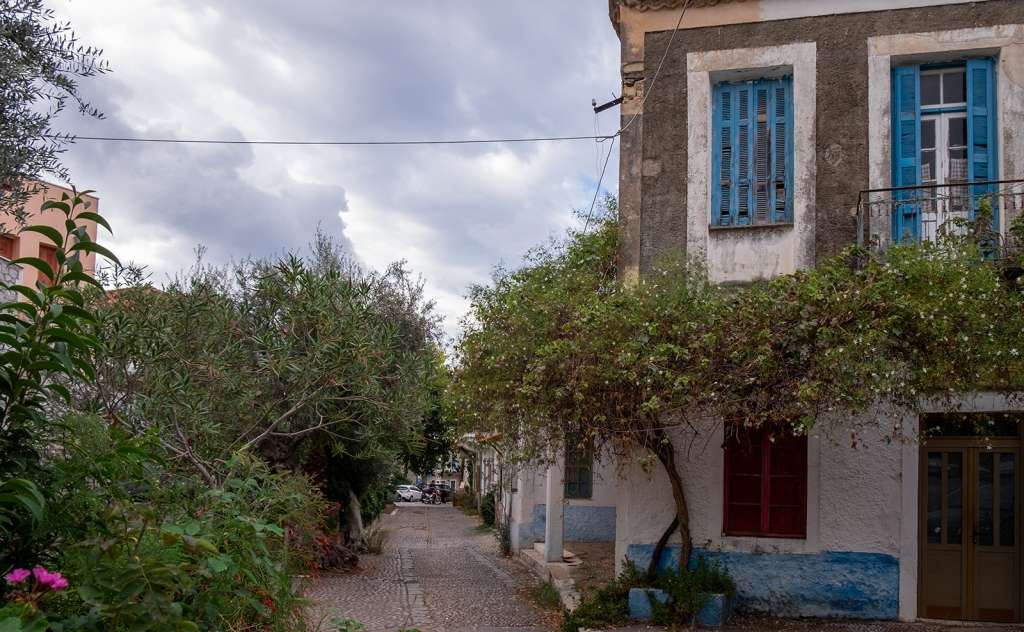









The seaside village of Kardamyli, with its stone-built houses, is located at the foothills of the slopes of Taygetos overlooking the Messenian Gulf. It is 38 kilometres from Kalamata. It has been designated as a place of exceptional natural beauty by the Ministry of Culture and hosts characteristic examples of the evolution of the Maniatian residences. The name "Kardamyli" was mentioned for the first time in the years of Homer and specifically in “Iliad” as the first of the "seven favoured and well-populated cities" that Agamemnon would give as a dowry to Achilles if he married one of his daughters.
According to traveller Pausanias (2nd century AD), the city was adorned with many temples and statues. At the same time, a seaside altar was placed in the memory of the Nereids emerging from the sea to watch the passage of Pyrrhus (son of Achilles), who was going to Sparta to marry the daughter of King Menelaus, Hermione. Ancient Kardamyli was the main port of the powerful ancient city-state of Sparta, with which it was connected via the mountainous "Royal Road", parts of which are preserved to this day along the natural course of the Vyros gorge.
Refugees from Mystras took refuge in Kardamyli after its destruction in 1460. Specifically, they took shelter hence the name Troupakis that exists in Mani (troupes, i.e., holes). Also, in Kardamyli, Theodoros Kolokotronis and other Maniatian chieftains planned the Revolution of 1821, while the Filiki Eteria (Society of Friends) had designated it as a base. Later Kardamyli was called "Skardamoula", while its ancient name prevailed in recent years. In fact, the name "Scardamoula" appears in an exhibition of 1465-1466 by the Venetian fortuneteller Barbarigo, while the name Cardamilia is noted on a map of 1675.
Kardamyli is one of the best preserved traditional settlements of the Messinian Mani and, at the same time, an important tourist resort. For mountaineers, many mountain trails start from here and even reach the top of Mount Taygetos. In 2012, Kardamyli became the place where the movie "Before Midnight" was filmed, while Travel+Leisure magazine included it in the list of the 25 most beautiful villages in Europe.
In the square of Kardamyli, visitors can see the bust of one of the fighters of 1821, Panagiotis (Mourtzinos) Troupakis, a piece of work by sculptor Nikos Bokeas. At a higher altitude than the old port, the observation tower, the so-called Vardia of Demetrius, stands, while very close to the small port (on an area of 3 acres) the old factory, one of the largest in the Balkans during the interwar period, dominates. Also, opposite the beach of Kardamyli, visitors can see the green island of Meropi (also known as Amygdalonissos). On the islet, there are the ruins of Venetian walls, as well as the single-aisled vaulted basilica of the Dormition of the Virgin (1779).
Near Epano (Upper) Kardamyli, the Hellenistic chamber tombs of Dioskouri are carved into a vertical, natural rock. The fortified complex of Mourtzinos-Troupakis located in Old Kardamyli is also highly noteworthy. In 1994, the fort complex was declared a historical monument. Nearby, the historic stone fountain of Kardamyli stands out with a built-in marble slab and the date 1734. Finally, in the old port, the small complex of buildings that used to house the Old Customs House of Kardamyli and was also a Venetian base is worth visiting. Here, the Venetians moored their sailing ships and sold goods from European ports in Mani and throughout Messinia.